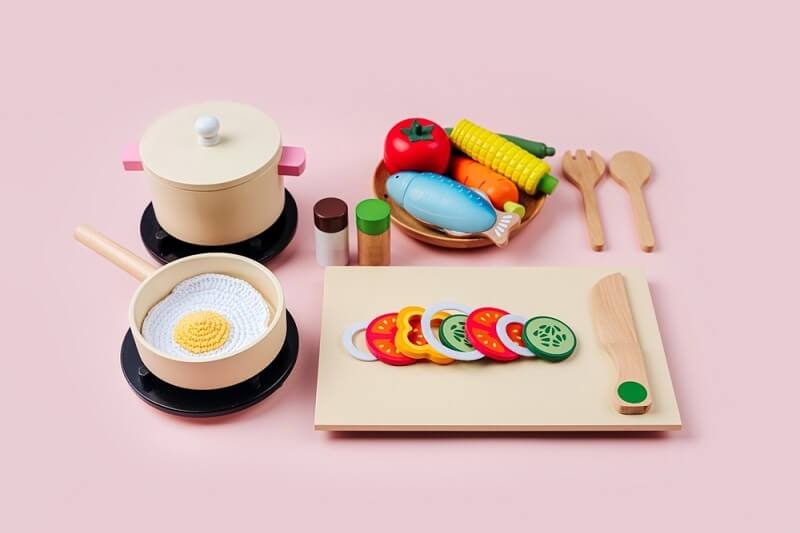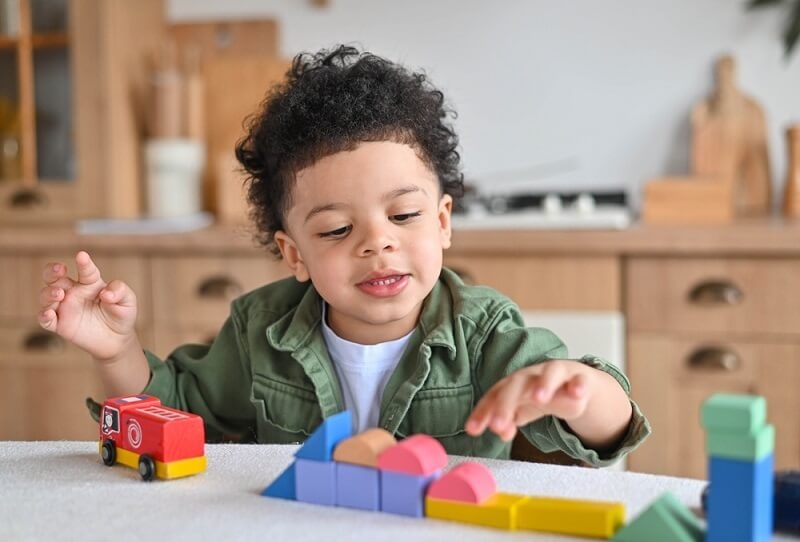
You know how it goes, some kids will eat broccoli like it's candy, while others look at it as if it's radioactive. Parents everywhere have faced the dinnertime standoff, pleading for just one more bite. But what if learning about food didn't start at the table at all? What if it started in the playroom?
That's where the magic of a learning toy comes in. Kids naturally learn through imitation, curiosity, and play, so giving them baby learning toys that celebrate fruits, veggies, and cooking can set the stage for lifelong healthy habits. It's not just about fun, it's about shaping how they see food before the word "picky" ever enters their vocabulary.
Playtime isn't just chaos and giggles, it's a quiet classroom in disguise. When children have access to play with learning toys that are either baby or toddler-oriented, they develop mental links that would go well beyond the childhood stage.
Toys that mimic food, for example, help children become familiar with colors, shapes, and textures and associate them with the real world. Slice a wooden apple in half? That's motor skills in action. Pretend to cook soup? That's imagination blending with practical learning.
You might not realize it, but these small moments are huge. When learning toys for toddlers make spinach look friendly or carrots exciting, you're teaching openness, not resistance. It's like sneaking vegetables into their favorite pasta, except sneakier.
More to Discover: Top Choices of Food For Brain Development Of 6 Month Baby

Here are five engaging learning toys that make fruits, veggies, and healthy habits part of everyday playtime, without feeling like a lesson.
Ever seen a toddler wield a toy knife with pure focus? It's oddly satisfying. The Wooden Fruit Cutting Set (Melissa & Doug's version is a classic) lets kids slice colorful fruits in half with Velcro "snaps" that mimic real chopping sounds.
This simple learning toy teaches coordination, hand strength, and the joy of pretend cooking. But there's more beneath the surface. When children "cut" an apple or banana, they're learning names, colors, and how fruits differ from one another.
Parents can join in, "Let's make a fruit salad!", and suddenly, it's not just play; it's an early nutrition lesson disguised as fun. And for babies just watching the action, these baby learning toys offer bright visuals and soft textures that keep them curious.
Picture this: a basket full of mini produce, color-coded and perfectly sized for little hands. The Farmer's Market Sorting Set is a clever learning toy for toddlers that combines sorting, counting, and healthy food recognition.
The baskets are a representation of food groups. Children are able to make purchases of colors or matches -carrots, grapes, corn. The toy is cute and presents simple mathematics and logic. Parents may continue the game by acting like they are going to purchase fruits and vegetables and transform the living room into a small farmer market.
The result? Toddlers associate fun with fresh food and no one has to coax
It is always pleasant to see children cook. A toy kitchen makes every child into a little cook, whether they are stirring some invisible soup or they are serving a plastic steak.
For slightly older ones, realistic kitchens, complete with pots, utensils, and pretend veggies, become the perfect learning toys for babies. They don't just mimic your actions; they absorb them. When you model healthy choices ("Let's cook something with broccoli today!"), they naturally follow your lead.
Surprisingly, children are more obedient during mealtime since they prepare the food first before the meal is placed on the plate.
Want to see wonder in real time? Hand a child a seed and tell them it'll become a tomato. The mix of disbelief and excitement is priceless.
Garden kits for toddlers are often underrated learning toys, yet they teach responsibility, patience, and connection with nature. As kids water their plants daily and watch sprouts emerge, they learn cause and effect, a cornerstone of cognitive growth.
For learning toys for toddlers, garden sets bridge play and reality beautifully. They also give parents a chance to talk about "real food" and where it comes from, lessons that sink deeper than any cartoon PSA ever could.
Frankly speaking, it is a victory when your child is happy to eat a tomato that he/she cultivated.
Memory and matching games are better than rainy day fun, and these games are excellent in teaching shapes and patterns to babies. Prefer fruit, vegetable, and healthy sets to cartoon food.
Familiarity is enhanced through repetition. The more your child is exposed to such foods the less foreign they will be at the dinner table. Suddenly, the peas are not green blobs, but they are the friends at game time.
Also check: The Picky Eater's Playbook: How to Get Kids to Try New Foods
Children do not only play to spend time, but to learn their world. When you introduce learning toys for kids that center around healthy eating, you're not just buying toys. You're shaping values.
And while it might sound lofty, it's really just about keeping things natural. Talk while you play. Ask, "Which vegetable is your favorite?" or "Who's cooking dinner tonight, Mom or Chef Teddy?" These conversations make healthy food relatable and fun.
There are parents who employ baby learning toys during the time of taking meals as a way of conversation, particularly among the reluctant eaters. It turns dinner into a shared story instead of a negotiation.
A quick word of advice: not all learning toys are created equal. Find durable, non-toxic substances, in particular to infants who believe that everything should be in their mouth.
In the case of toddlers, choose toys that combine fantasy and education. They must allow the children to play on their own and call you to play. The best toys don't feel like "lessons." They feel like adventures waiting to happen.
And if you're unsure? Go with toys that encourage hands-on interaction, cutting, sorting, planting, or matching. The greater number of senses employed the greater the learning.
Must Read: Parental Tips for Turning Veggie Haters into Veggie Lovers
In the end, it's not really about the toy itself. It's about what it represents, a moment where play and parenting meet halfway. A space where you're teaching without lecturing, connecting without forcing it.
When learning toys for kids make healthy food fun, you're planting tiny seeds (sometimes literally) for habits that last. So go ahead, set up the pretend kitchen, let them "cook," and share a giggle or two.
Because someday, that same little chef might be the one reminding you to eat your vegetables.
This content was created by AI